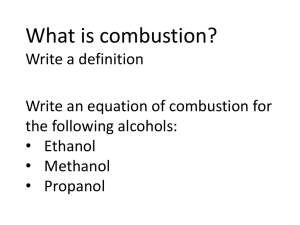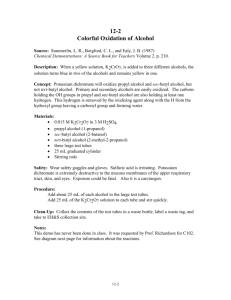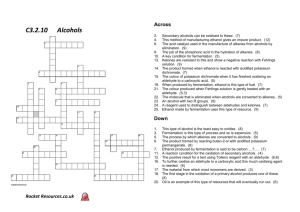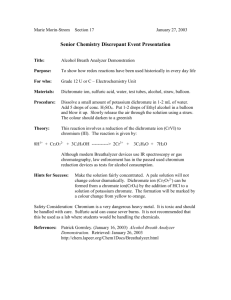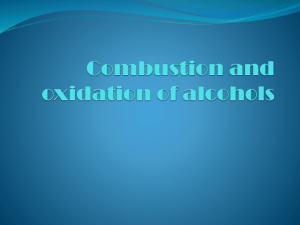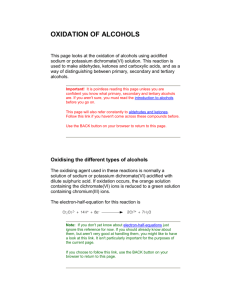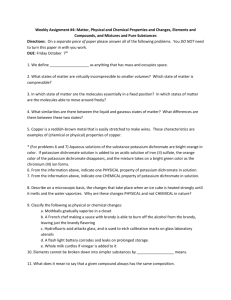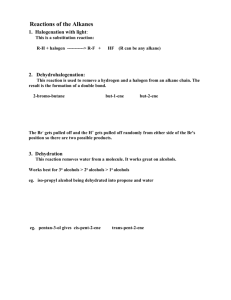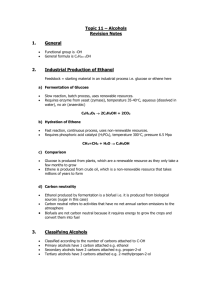Oxidation of Alcohols using Acidified Dichromate
advertisement
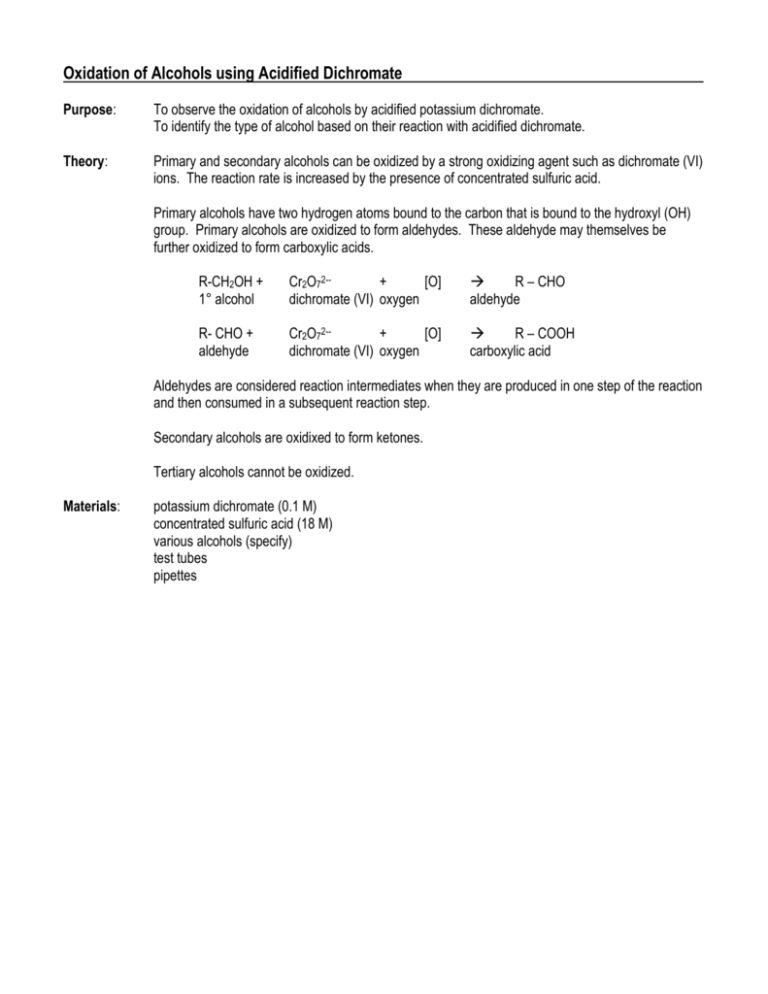
Oxidation of Alcohols using Acidified Dichromate Purpose: To observe the oxidation of alcohols by acidified potassium dichromate. To identify the type of alcohol based on their reaction with acidified dichromate. Theory: Primary and secondary alcohols can be oxidized by a strong oxidizing agent such as dichromate (VI) ions. The reaction rate is increased by the presence of concentrated sulfuric acid. Primary alcohols have two hydrogen atoms bound to the carbon that is bound to the hydroxyl (OH) group. Primary alcohols are oxidized to form aldehydes. These aldehyde may themselves be further oxidized to form carboxylic acids. R-CH2OH + 1° alcohol Cr2O72-+ [O] dichromate (VI) oxygen R – CHO aldehyde R- CHO + aldehyde Cr2O72-+ [O] dichromate (VI) oxygen R – COOH carboxylic acid Aldehydes are considered reaction intermediates when they are produced in one step of the reaction and then consumed in a subsequent reaction step. Secondary alcohols are oxidixed to form ketones. Tertiary alcohols cannot be oxidized. Materials: potassium dichromate (0.1 M) concentrated sulfuric acid (18 M) various alcohols (specify) test tubes pipettes Results: Observations and determined type for various alcohols when mixed with acidified (0.1 M) potassium dichromate solution. Alcohol Name Structure Observations Alcohol Type (1° , 2° , 3° ) Observed Expected
